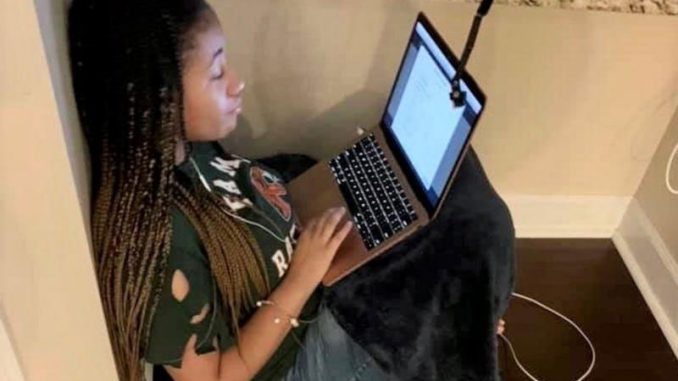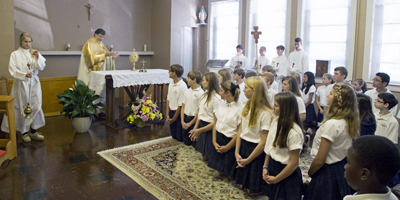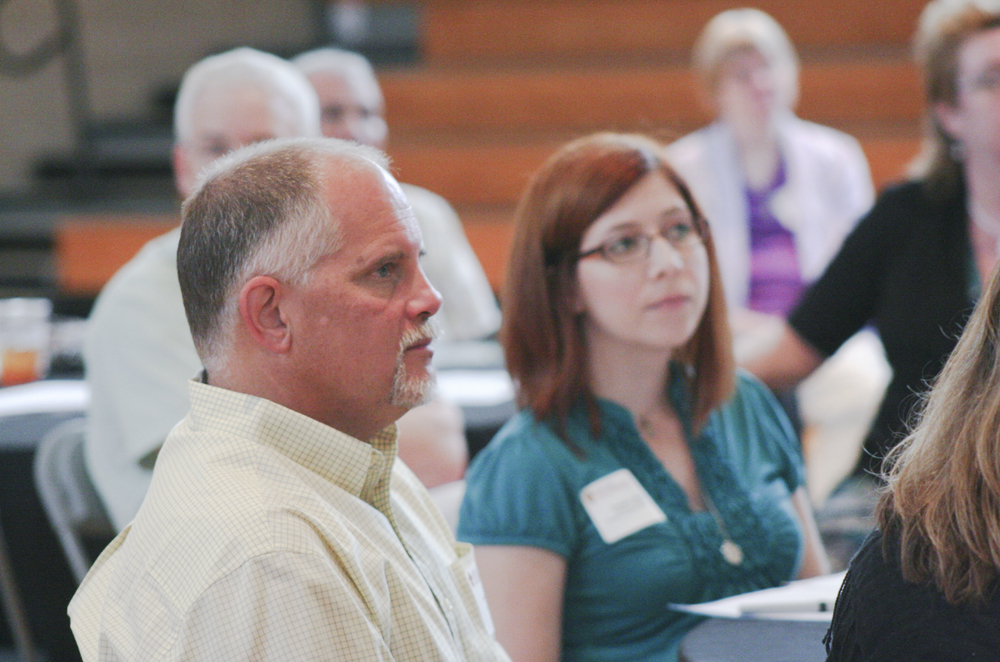
WEST PALM BEACH, Fla.—Education leaders imagining how Catholic schools will safely reopen this fall agree on two things: different decisions will be made according to locations and reopening plans may change on short notice.
In addition, with so much unknown about if and how the country will fully reopen with a COVID-19 pandemic far from over, there is also the possibility that many schools will restart in the fall through remote learning only — a prospect that educators say they hope to avoid.
“If we don’t have that face to face (contact) and just go immediately into remote learning, it is more difficult and it is not what I want for our teachers or students — I want them to have some time together,” said Kathy Mears, interim director of the National Catholic Educational Association.
Educators are hearing the predictions of a possible secondary, maybe even stronger wave of COVID-19 arriving toward the end of this year. But if schools can get an early start on the school year by starting early on campus in some fashion, it would put them in a better position if lockdowns are required once again in the winter.
“Then if we have to go back into remote teaching I think it is a stronger kind of teaching when everyone knows each other because my fear is that the virus comes back and harms more people,” Mears said, referring to an old definition of Catholic education as an intimate communication between souls best developed face to face.
“If we need to (stay on lockdown) then we will, but everybody in the country wants to reopen and I am hopeful that we will be able to do that,” she told Catholic News Service.
To plan for either eventually, some Catholic schools plan to craft teaching lessons in blocks of four weeks at a time both in face-to-face and remote learning formats so that they can rapidly shift between the two if need be.
“Schools are looking at all those questions right now and trying to figure it out — and that will be the focus of our phone calls with superintendents and having them share ideas online and learn from each other,” Mears said.
One possibility under consideration is that schools could reopen as early as July and try to get at least three months of face-to-face time underway before October — a concept that is being floated on the West Coast and a few other places, according to Mears.
That, however, may present practical problems for Catholic schools that aren’t outfitted with adequate air conditioning and are located in regions with hot, humid summer climates.
Another idea gaining some traction is to break the school day into two shifts, from 7:30 a.m. to 11:30 a.m. and then 12:30 p.m. to 4:30 p.m., in order to have fewer students on campus at any one time and to better comply with social distancing protocols.
Others have suggested schools take learning outdoors as much as possible, gathering students in open air spaces.
“Some of our best teachers already provide a lot of outdoor activities even now during remote learning and are still providing them: I go on Twitter and watch teachers having their children go on walks, taking pictures of what they see and writing stories about it,” Mears said, acknowledging moving outdoors on a school-wide level may nevertheless be impractical.
Mary Pat Donoghue, executive director of the Secretariat of Catholic Education for the U.S. Conference of Catholic Bishops, notes that in a country as big as the United States, different regions will come up with different solutions for the fall.
“Like everyone, I have no specifics, but it will look different in Montana than in New York,” Donoghue said. “My sense is that the leadership of our schools are informed and working closely with their local government officials and that is the most important thing.”
“They all desire to get back into school as quickly and safely as possible, only when we feel it is safe,” she said, adding that there are regions in the U.S. with significant COVID disease and others with very little.
Schools will have to make decisions that best suit their environment, said Donoghue, who predicts that some reopening decisions will be taken comparatively late this year, with plans subject to change right up to the last minute and long after the normal spring and summer enrollment season.
It doesn’t help that scientific data and understanding about COVID-19 is still in its infancy stage, Donoghue added, saying: “There is nothing normal about this situation.”
In the Diocese of Charleston, S.C., a Task Force for School Reopening is being organized to work with the Catholic Schools Office on the best way to reopen, according to Sandra Leatherwood, diocesan Superintendent of Catholic Schools.
Leatherwood said some of the aspects they are looking at are potential dates for reopening and guidelines for schools to follow in order to maintain safety for students and staff. The task force will be composed of members of the Diocesan School Advisory Council, principals, teachers and parents. Bill Ryan, the incoming superintendent, has also been asked to serve.
Kitty Quinn, assistant superintendent of elementary schools for the Diocese of Columbus, Ohio, said that the Columbus Catholic schools are looking at some kind of slower reentry to give faculty and staff time to assess the student social-emotional issues amid the pandemic. Schools there are scheduled to reopen Aug. 20.
“That gives us the ability to assess where we are at and figure out where the gap is and what we have to do to design the education practices to both catch up and keep moving,” Quinn said, adding that Ohio’s hot Midwestern summers and the school’s limited air conditioning preclude an early opening in July.
In Brookline, Massachusetts, Theresa Kirk, principal of Saint Mary of the Assumption elementary school, said her focus now is on finishing the current school year June 12, but that the school planned to reconvene current and new students online for another several weeks of remote learning starting July 6. The aim is to mitigate the “summer slide” when students tend to lose knowledge over the vacation months.
“We really feel that additional time will help give them an edge, then we are off again for August and start school the day after Labor Day,” said Kirk, adding that she also has her doubts about the next school year given the likelihood of a lingering pandemic.
“It is still concerning to think that we would open around Labor Day. I cannot imagine that necessarily happening in the way we normally do unless we have significant change,” she said, adding that the prospect of social distancing the younger children will be a challenge.
“I have a retention team working with me and thinking about what the fall could look like. It could be a blend of some remote learning and small class size coming together in a way that not everyone is there all at once — sort of a staggered opening,” Kirk said.
Saint Mary of the Assumption faculty are also talking about having the students eat lunch in their classrooms but not in the cafeteria; using more entrances to the building; and foregoing physical education and gymnasium activities to enhance student distancing.
Meanwhile, the school hired an outside marketing firm to create a virtual tour video production and is busy taking fall enrollment and registration digitally.
“Our enrollment continues to prosper and I would say we are very blessed that our numbers are holding strong; our tuition is holding strong — all things you worry about when you are not seeing people every day,” Kirk said, adding that safety is a top priority.
Looking ahead, she put it this way: “We are cautiously optimistic.”
By Tom Tracy
The Catholic Miscellany contributed to this post.



